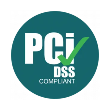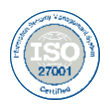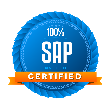Tech and Trends
Procurement in the digital age: Trends driving transformation

In the ever-evolving business landscape, procurement is no longer limited to simply purchasing goods and services; instead, it has become a strategic function that shapes organizational growth, resilience, and sustainability. As organisations strive to optimize their operations and drive efficiency, they are embracing trends that are reshaping the procurement function. Let’s explore some of the current trends in procurement management that are shaping the way modern businesses are run.
1. Investment in good supplier management technology:
Supplier management involves managing relationships with suppliers throughout the procurement process. It includes activities such as supplier selection, performance management, and risk management. By investing in good supplier management technology, procurement teams can streamline these processes, improve accuracy, and free up time for strategic decision-making. In fact, according to a recent KPMG survey, 6 in 10 companies plan to invest in digital technology to strengthen their procurement processes, including procurement analytics.
So how does this work? Let’s say Company X implements a cloud-based supplier management platform that allows it to consolidate its supplier database, track performance metrics, and improve communication. By centralizing its supplier information and leveraging real-time data, it is able to achieve cost savings, mitigate risks, and strengthen relationships with its key suppliers.
Therefore, investing in good supplier management technology is crucial for businesses that want to optimise their supply chains, streamline procurement and drive sustainable growth in the future.
2. Sustainability and ESG considerations:
Sustainability and Environment, Social, and Governance (ESG) considerations, along with ethical sourcing and responsible procurement, are no longer buzzwords but essential pillars of modern procurement practices. Ethical sourcing and responsible procurement are at the core of sustainable practices because they ensure that the products we buy are produced while being respectful of people and the planet. Similarly, the traditional linear model of production, where resources are extracted, used, and discarded, is no longer sustainable. Instead, the circular economy promotes a closed-loop system, where materials are reused, recycled, or repurposed. Sustainability and responsible procurement go hand in hand with ethical sourcing and circular economy practices. By integrating these principles into procurement strategies, companies can achieve multiple benefits. Not only do they make a positive difference to society and the environment, but they also meet the expectations of younger consumers and enhance the companies’ brand reputation.
Take the example of Company Y, a fashion retailer committed to responsible procurement. It partners with ethically conscious suppliers, and implements a garment recycling program, encouraging customers to exchange old clothes for a discount on new purchases. It also implements stringent guidelines for its suppliers and ensures fair labour practices. It ends up reducing its carbon emissions, undertaking responsible waste management, and strengthening its brand reputation while attracting a new segment of eco-conscious consumers.
Hence, companies that embrace sustainability practices can unlock myriad opportunities.
Read Also: How data driven ESG finance forges sustainable supply chain partnerships
3. Digital transformation and automation:
Digital transformation is revolutionizing procurement practices, paving the way for increased efficiency and accuracy. Data analytics lies at the heart of this digital transformation in the procurement function. With vast amounts of data being generated every day, organizations have a goldmine of information in their systems. By harnessing this data through analytics, procurement professionals can gain valuable insights into supplier performance, market trends, and demand patterns. Further, by applying advanced algorithms and machine learning techniques, they can project future demand, identify potential risks, and optimize procurement strategies proactively. In fact, according to the Deloitte 2023 Chief Procurement Officer (CPO) Survey, nearly all CPOs understand these powers of digitization, which is why digital transformation was the second most cited procurement strategy in the survey. PwC’s 2023 Digital Trends in Supply Chain Survey further corroborates this—22% of surveyed executives said that their companies plan to invest at least $5 million in AI- and ML-based supplier management technologies.
4. Building resilient supply chains:
In today’s VUCA world, organisations are realising the importance of resilience in their supply chains. Deloitte says that 70% of CPOs it surveyed indicated that procurement-related risk/supply chain disruption has increased in the last year or so, meaning Risk is here to stay. Little wonder then that CPOs are no longer content with merely optimising costs and maximising efficiency. Instead, they are proactively preparing for disruptions and building robust supply chains that can weather unexpected storms.
Gone are the days of relying heavily on a single source or region for supplies. Organisations are now expanding their supplier networks to include multiple vendors, both local and international. By spreading their risk across various suppliers, they can mitigate the impact of disruptions caused by natural disasters, political unrest, or global crises. For example, as a result of the Covid pandemic and the growth in geopolitical tensions between China and the West, MNCs have begun adopting a China + 1 strategy in terms of sourcing.
Resilient supply chains also require robust contingency plans and rapid response mechanisms. Organisations are proactively identifying potential risks and developing strategies to mitigate them. They are creating backup plans, alternative routes, and contingency inventory to avoid supply disruptions, which is why 86% of respondents in the PwC survey agree that their companies should invest more in technology to identify, track, and measure supply chain risk.
Building resilient supply chains is no longer a luxury but a necessity for organisations in a VUCA environment.
5. Agile supply chain management:
Agility is becoming a key differentiator in Supply Chain Management. Organisations are adopting supply chain strategies to respond quickly to market demands and changing customer needs. By embracing flexible contracts, streamlined approval processes, and cross-functional collaboration, companies can adapt to dynamic market conditions effectively. Instead of relying on lengthy and rigid contracts, an agile procurement team can negotiate flexible agreements with suppliers allowing their company to adapt quickly to changing requirements, adjust quantities, and explore new materials or technologies. By involving suppliers early on, it is possible to gain valuable insights, leverage supplier expertise, and ensure a smooth and efficient procurement process. Moreover, purchase orders, approvals, and supplier communication can all be seamlessly managed through user-friendly online platforms, reducing administrative burden and ensuring faster turnaround times.
Agile supply chain management isn’t just about speeding up procurement processes and logistics to deliver products faster. It’s also about building strong relationships with suppliers and fostering a collaborative ecosystem. By treating suppliers as strategic partners rather than mere transactional entities, organisations can unlock a wealth of benefits.
Undoubtedly, agile supply chain management is a game-changer in today’s fast-paced business world.
6. Transparency and compliance:
There is a growing emphasis on conducting procurement activities in a transparent manner, with clear rules and procedures, and in compliance with applicable laws, regulations, and organisational policies. It involves disclosing procurement processes, criteria, and decisions, as well as sharing information about the procurement budget, contract terms, and performance data with various stakeholders. By promoting transparency, organisations aim to foster trust, prevent corruption, and enable fair competition among suppliers.
Compliance, on the other hand, focuses on adhering to legal and ethical requirements throughout the procurement lifecycle. This includes compliance with relevant laws, such as anti-corruption laws, trade regulations, labour laws, and environmental regulations. Organisations are expected to conduct due diligence on suppliers to ensure they comply with these standards and avoid engaging in unethical or illegal practices.
Digital platforms and e-procurement systems have come to their aid by providing greater visibility into the procurement process, allowing stakeholders to track and monitor procurement activities in real-time. Blockchain technology, for instance, can enhance transparency by creating an immutable and auditable record of procurement transactions.
Thus, by promoting transparency and compliance, organisations aim to minimise risks, build trust, and ensure fair and ethical procurement practices.
The last word
The procurement function plays a pivotal role in driving the success and sustainability of a company. It plays a critical role in cost management, supplier management, risk mitigation, strategic sourcing, compliance, and value creation. Its contributions help maintain supply chain stability, support strategic objectives, drive quality improvements and ensure compliance thus helping businesses to succeed. Therefore, by embracing the procurement trends mentioned above, businesses can drive efficiency, mitigate risks, and achieve sustainable growth in the dynamic business environment. The views expressed in this article are by Mohan Ramaswamy, Co-founder of Rubix Data Sciences.







